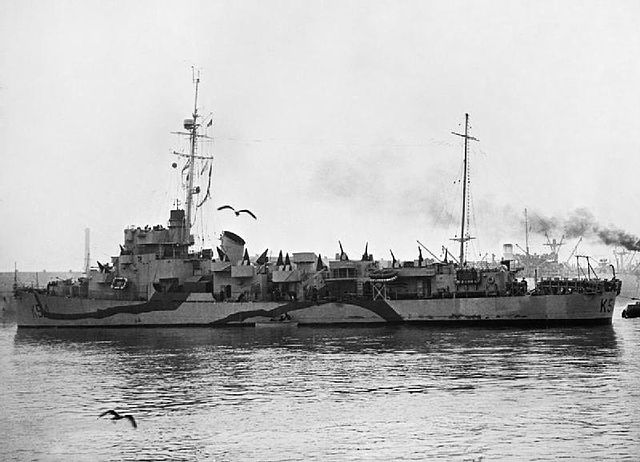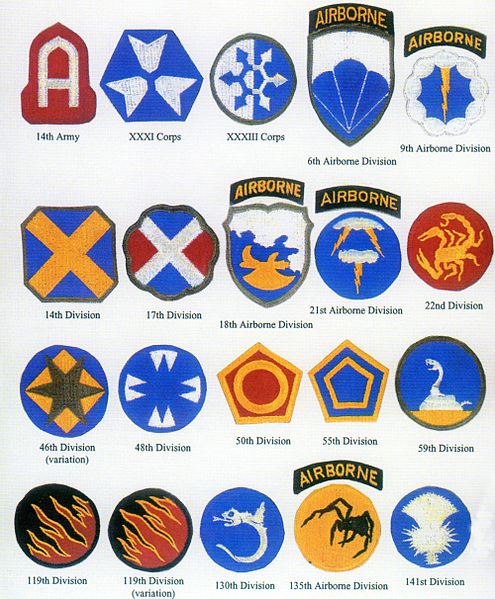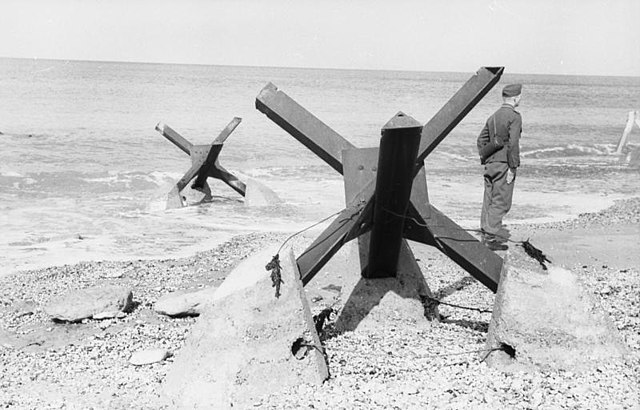Juno and or Juno Beach was one of five beaches of the Allied invasion of German-occupied France in the Normandy landings on 6 June 1944 during the Second World War. The beach spanned from Courseulles, a village just east of the British beach Gold, to Saint-Aubin-sur-Mer, and just west of the British beach Sword. Taking Juno was the responsibility of the First Canadian Army, with sea transport, mine sweeping, and a naval bombardment force provided by the Royal Canadian Navy and the British Royal Navy as well as elements from the Free French, Norwegian, and other Allied navies. The objectives of the 3rd Canadian Infantry Division on D-Day were to cut the Caen-Bayeux road, seize the Carpiquet airport west of Caen, and form a link between the two British beaches on either flank.
Canadian soldiers landing at Juno on the outskirts of Bernières.
HMS Lawford, one of several Captain-class frigates converted to act as a headquarters ship for the Normandy landings, note the extended superstructure (to accommodate the Staff Officers) and additional smaller mainmast to support the extra aerials. On 8 June 1944, whilst operating off Juno, she was hit by enemy fire during an air attack and sunk.
Field Marshal Erwin Rommel inspecting Atlantic Wall defences, April 1944
The cruiser HMS Belfast bombarding Juno on D-Day
The Normandy landings were the landing operations and associated airborne operations on Tuesday, 6 June 1944 of the Allied invasion of Normandy in Operation Overlord during World War II. Codenamed Operation Neptune and often referred to as D-Day, it is the largest seaborne invasion in history. The operation began the liberation of France, and the rest of Western Europe, and laid the foundations of the Allied victory on the Western Front.
Taxis to Hell – and Back – Into the Jaws of Death, an iconic image of men of the 16th Infantry Regiment, US 1st Infantry Division wading ashore from their landing craft on Omaha Beach on the morning of 6 June 1944
Meeting of the Supreme Headquarters Allied Expeditionary Force (SHAEF), 1 February 1944. Front row: Air Chief Marshal Sir Arthur Tedder; General Dwight D. Eisenhower; General Sir Bernard Montgomery. Back row: Lieutenant General Omar Bradley; Admiral Sir Bertram Ramsay; Air Chief Marshal Sir Trafford Leigh-Mallory; Lieutenant General Walter Bedell Smith.
Shoulder patches were designed for units of the fictitious First United States Army Group under George Patton.
Czech hedgehogs deployed on the Atlantic Wall near Calais








